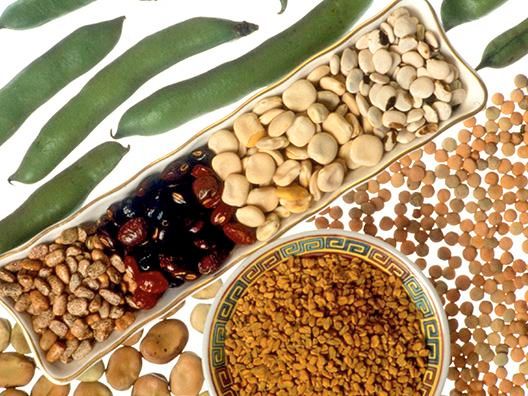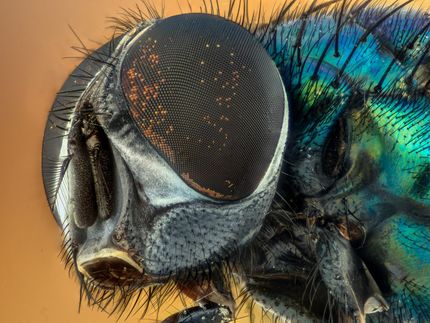Diets High in Fiber Associated with Less Antibiotic Resistance in Gut Bacteria
Advertisement
Healthy adults who eat a diverse diet with at least 8-10 grams of soluble fiber a day have fewer antibiotic-resistant microbes in their guts, according to a study published by Agricultural Research Service scientists and their colleagues inmBio.

Healthy adults eating a diverse diet with at least 8-10 grams of soluble fiber a day have fewer antibiotic-resistant microbes in their guts. Soluble fiber is found in foods such as grains, beans, lentils, nuts, and some fruits and vegetables.
Agricultural Research Service / USDA
Microbes that have resistance to various commonly used antibiotics such as tetracycline and aminoglycoside are a significant source of risk for people worldwide, with the widely held expectation that the problem of antimicrobial resistance (AMR)—the term that refers to bacteria, viruses, and fungi that are resistant to antibiotics—is likely to worsen throughout the coming decades.
Antimicrobial resistance in people is largely based in their gut microbiome, where the microbes are known to carry genetically encoded strategies to survive contact with antibiotics.
"And the results lead directly to the idea that modifying the diet has the potential to be a new weapon in the fight against antimicrobial resistance. And we're not talking about eating some exotic diet either, but a diverse diet, adequate in fiber, that some Americans already eat," explained research molecular biologist Danielle Lemay with the ARS Western Human Nutrition Research Center in Davis, California, and leader of the study.
In this study, the researchers were looking for specific associations of the levels of antibiotic resistance genes in the microbes of the human gut with both fiber and animal protein in adult diets.
The researchers found regularly eating a diet with higher levels of fiber and lower levels of protein, especially from beef and pork, was significantly correlated with lower levels of antimicrobial resistance genes (ARG) among their gut microbes. Those with the lowest levels of ARG in their gut microbiomes also had a greater abundance of strict anaerobic microbes, which are bacteria that do not thrive when oxygen is present and are a hallmark of a healthy gut with low inflammation. Bacterial species in the family Clostridiaceae were the most numerous anaerobes found.
But the amount of animal protein in the diet was not a top predictor of high levels of ARG. The strongest evidence was for the association of higher amounts of soluble fiber in the diet with lower levels of ARGs.
"Surprisingly, the most important predictor of low levels of ARG, even more than fiber, was the diversity of the diet. This suggests that we may want to eat from diverse sources of foods that tend to be higher in soluble fiber for maximum benefit," Lemay added.
Soluble fiber, as its name suggests, dissolves in water and is the main type of fiber found in grains like barley and oats; legumes like beans, lentils and peas, seeds (like chia seeds) and nuts; and some fruits and vegetables like carrots, berries, artichokes, broccoli and winter squash.
On the other end of the data, those people who had the highest levels of ARG in their gut microbiomes were found to have significantly less diverse gut microbiomes compared to groups with low and medium levels of ARG.
"Our diets provide food for gut microbes. This all suggests that what we eat might be a solution to reduce antimicrobial resistance by modifying the gut microbiome," Lemay said. In total, 290 healthy adults participated in the study.
"But this is still just a beginning because what we did was an observational study rather than a study in which we provided a particular diet for subjects to eat, which would allow more head-to-head comparisons," Lemay said. "In the end, dietary interventions may be useful in lessening the burden of antimicrobial resistance and might ultimately motivate dietary guidelines that will consider how nutrition could reduce the risk of antibiotic-resistant infections."

























































